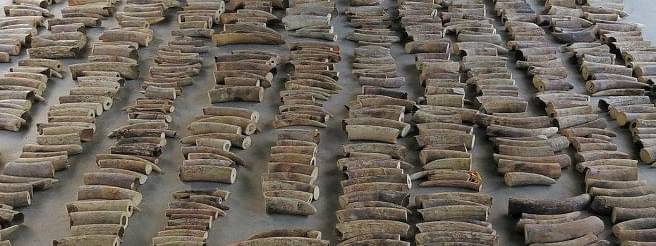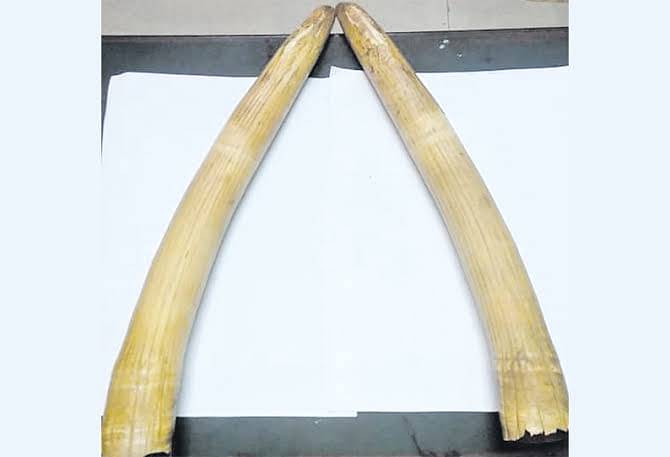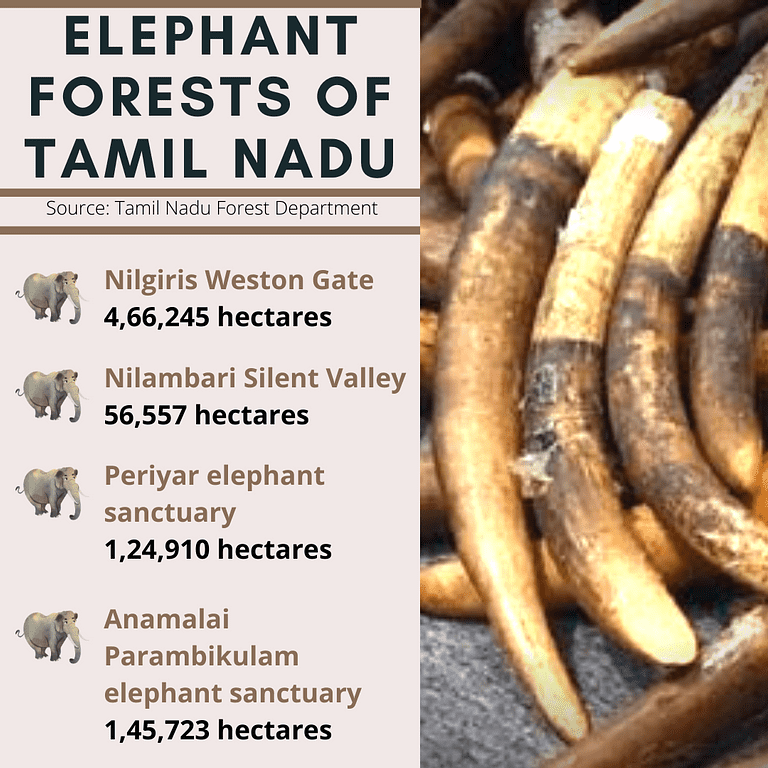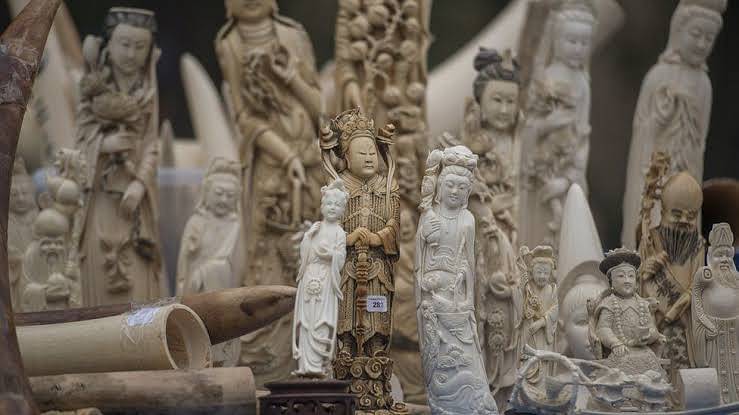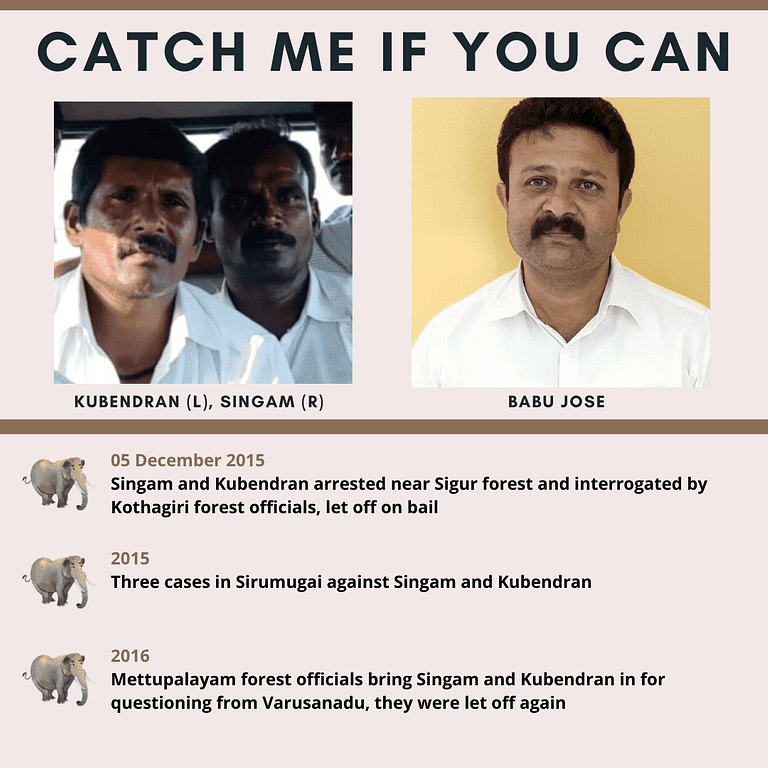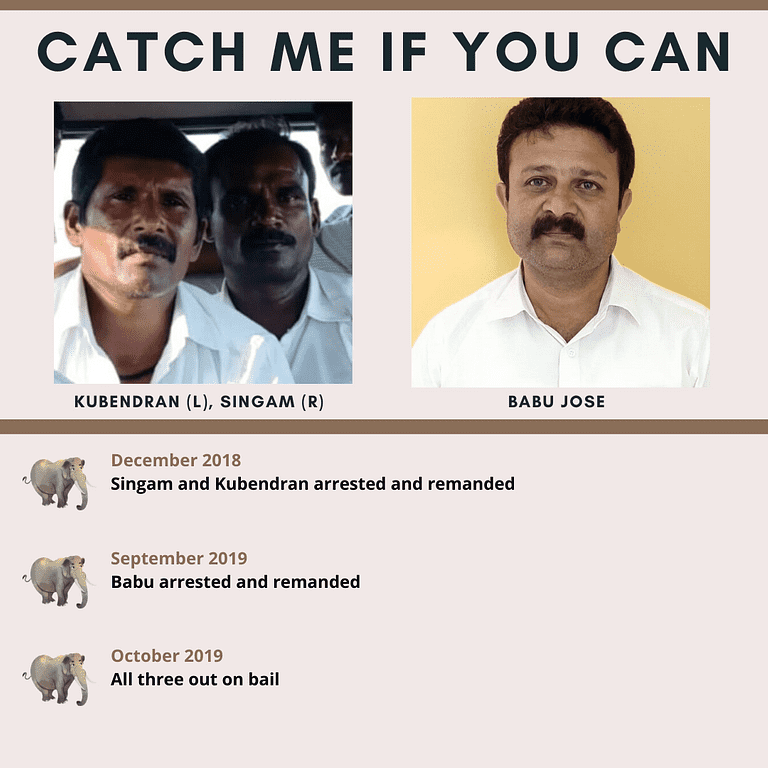Trending Now
- 830 voters names go missing in Kavundampalayam constituency
- If BJP comes to power we shall consider bringing back electoral bonds: Nirmala Sitaraman
- Monitoring at check posts between Kerala and TN intensified as bird flu gets virulent in Kerala
Tamilnadu News
The Elephant Killers Of Tamil Nadu
![]() July 14, 2020
July 14, 2020
How at least 60 elephants were poached relentlessly for 375 kilos of ivory in the past ten years; and how poachers got away scot-free
In 2010, a group of men belonging to a hunting tribe in Varusanadu, Theni were idling away their time, hunting small game on the edges of the forests, as their forefathers did.
But fate was to set different rules for Singam, 42 and Kubendran, 44, both relatives and ace hunters.
They would become the most dangerous elephant killers in the Western Ghats in Tamil Nadu.
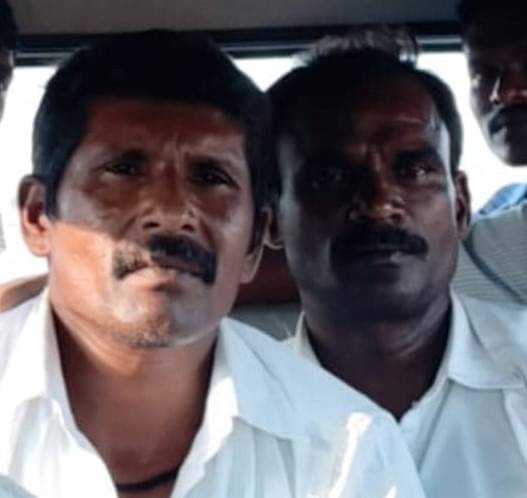
Kubendran (L) and Singam (R) Photo credit: Tamil Nadu Forest Department
And they, along with four other teams from Varusanadu, have taken at least 375 kilograms of tusks in the past ten years – meaning the massacre of around 60 elephants.
Worst of all is the fact that Tamil Nadu Forest Department officials apprehended them thrice in the intervening years, obtained confessions from them and allowed them to go out on bail to continue with their poaching.
Singam and Kubendran
The elephant hunters Singam and Kubendran are the most notorious of them all. Of the total known amount of 375 kg of tusks, Singam and Kubendran alone have been responsible for a haul of 300 kg.
The story of these poachers has been gathered by The Lede from the authorities at the Tamil Nadu forest department, who have, over the years, questioned the duo.
In 2010, Singam and Kubendran were whiling away time in their village in Varusanadu, when they were contacted by one Jose, a dealer in ivory. Jose hailed from Udumbanchola village in Idukki district in Kerala. Jose then introduced Kubendran to his son, Babu Jose, who promised to pay rich sums for tusks.
Tusks Photo credit: Tamil Nadu Forest Department
“Babu met Kubendran and told him that he would give him a lot of money if he poached elephants and got him tusks. Kubendran introduced Singam to Babu and said that they would both do the task,” said Forest Ranger E Selvaraj, Mettupalayam range, who opened up about this extraordinary story to The Lede.
The first hunt took place in the forests of Theni in 2010 itself. Singam, Kubendran, Mani and Nagaiyya aka Nagu together hunted down one elephant and removed its tusks. But once Babu paid them, a dispute broke out between the team mates over distribution of the spoils. Mani and Nagu decided to go off on their own – they eventually formed their own teams of elephant hunters and would kill at least 75 elephants over the years.
Singam and Kubendran though stuck on together.
They began to look for elephants inside the forests of Theni district. The search went on for days. Unable to find any elephants, they returned to their village, exhausted.
How did they begin hunting in the forests of Coimbatore and Nilgiris?
“We would read the newspapers once in a while. Whenever we read them, we would find articles about elephants entering human habitations in Mettupalayam, elephants destroying crops in Nilgiris and elephants causing havoc in Coimbatore. That helped us hatch our plans,” Kubendran and Singam are said to have recounted to forest department officials.
Where elephants live in Tamil Nadu
Subsequently, the duo informed Babu that they were going to Coimbatore and boarded a bus from Theni. From the Coimbatore bus stand, they arrived in Mettupalayam by evening.
The Mettupalayam forest range is of 9152 hectares in area and borders the Sathyamangalam tiger sanctuary and Mudumalai tiger sanctuary. The elephant population in these forests is large – perfect hunting grounds for the Varusanadu poachers.
Both of them headed straight to the Kallaru forest area and asked tribals living in the hills there where to find and how to tap mountain honey.
They went in the direction pointed out to them by the tribals. To go inside the Kallaru forests, they took the road to Ooty and at the second hairpin bend, both Singam and Kubendran walked through a small path and stayed in the dense forest there.
Both of them roamed around the forest area for three days to find out where the elephants were, where forest officials were present and noted down timings of their rounds. They then returned home to Theni.
Once home they contacted Babu and told him they needed equipment for the hunt. Babu Jose bought them a single barrelled rifle and utensils for cooking.
Babu then drove them to the second hairpin bend on the Ooty road in his Maruti Omni van and dropped them off there with supplies.
Their first elephant kill in Mettupalayam was in 2010. They told authorities that it was a very easy job. Their first poaching attempt yielded them 10 kg of tusks.
Intermediary Babu Jose of Idukki, Kerala Photo credit: Tamil Nadu Forest Department
“Elephants move around in herds of at least ten. Kubendran would do the job of distracting the elephant with large tusks and he would separate it from the herd. He would lure the elephant away for a distance of 2-3 km to where Singam would be waiting. Kubendran would run circles around the elephant and anger the elephant. The elephant would follow Kubendran in an attempt to chase him away. Singam would be positioned on a tree with his gun. He would shoot the elephant directly between the eyes, leading to instant death,” said Forest Ranger Selvaraj. “Just two people entering into such a huge and dense forest, poaching elephants and removing tusks is an almost unbelievable feat.”
Babu paid them Rs 15,000 for the tusks but sold them for over Rs 1 lakh, according to authorities.
The poachers, flush with sudden and big money, went on a killing spree.
In 2012, in two different hauls, 17 kg and 16 kg respectively of tusks were taken by them in Bhavani-Kallaru forest area.
In 2013, 22 kg of tusks was removed in Kallaru area. Another 9 kg was taken from Kallaru area.
In 2014, in Kothagiri-Bhavani forests, in two instances, they took 30 kg and 4 kg of tusks each.
Figurines made of ivory
The poachers, during the first apprehension and questioning by the Forest Department admitted to having killed three elephants in Kallaru, three in Sirumugai, one in Kothagiri and two elephants in Sigur.
Babu would take the tusks from the duo and paid according to the weight of the tusks.
“Once when we gave him 18 kg, we were paid Rs 8000 per kg of tusks, which is a very big sum for us,” said the duo to the forest officials. They also recounted proudly how when they brought back five kilos of tusks, despite the small amount and not taking a shortage of 100 grams into consideration, Babu paid them Rs 4000 per kg.
The arrangement was clearly a happy and mutually beneficial one.
Slipping Out Of Forest Department’s Clutches
The dream run continued for five years.
It was in 2015, when an anti-poaching unit was on rounds, when they found two individuals behaving “suspiciously” in the forest of Sigur in the northern ranges of the Nilgiris. The unit found weapons on them as well.
It was Singam and Kubendran. They had been caught for the first time. Both the poachers were handed over to the Kothagiri forest division.
On 05 December 2015, three cases were filed against them under Section 9 of the Wildlife (Protection) Act, 1972 which prohibits hunting.
Upon questioning, details began tumbling out. Forest officers added intermediary Babu’s name to the FIR after the poachers gave him up. But the arrested poachers quickly got bail and slipped out to continue their hunt.
In 2016, as more elephants were poached for tusks, the Mettupalayam range office of the Forest Department set up a 10-member special team headed by officers Selvakumar and Ravi.
This team headed to Varusanadu in Theni district and picked up Singam and Kubendran for questioning. They were brought back to the Mettupalayam forest office.
Exhaustive questioning took place and based on the information supplied by Singam and Kubendran, officials went into the reserved forest at Kallaru and found elephant skeletons, carcasses and teeth at different places, in different stages of decay.
A search was then initiated for intermediary Babu Jose in Idukki district. He went into hiding. From 2016 to 2019, the hunt for Babu did not yield any success.
Despite Babu’s name being added to the case in first FIR lodged in Kothagiri range, until December 2018, he kept getting anticipatory bail and disappearing on the officials.
It was only on 22 September 2019, when Babu arrived at court in connection with a case registered at the Sirumugai forest area, that Mettupalayam Forest Ranger Selvaraj and his team surrounded him and arrested him.
After having informed their superiors, they took Babu to an anonymous location and questioned him.
Cases against the trio
Cases against the trio
“Babu confessed to having bought the tusks from Singam and Kubendran and having sold the same to one Ajit Bright in Kerala. He stated that he did not know to whom Ajit Bright sold the tusks,” said Forest Ranger Selvaraj.
Forest authorities say that Ajit Bright has connections in Delhi, Mumbai and other metros of India as well as international connections through which he sells the ivory.
With a 12-page confession from Babu, the three conspirators were remanded and sent to jail in a case filed for poaching in the Mettupalayam forest range.
But in October 2019, all three were released on bail. Forest officials say they do not know if the poaching continues.
“Despite our best efforts, we were unable to file a chargesheet, and thanks to COVID-19, the courts were not functioning fully either, which went against us,” said Forest Ranger Selvaraj.
But experts say there are other ways to curb poaching.
“When I was DFO Tiruppattur in 1994-95, we booked habitual offenders under Goondas Act,” said Dr S Balaji, former Principal Chief Conservator of Forests.
Goondas Act is a draconian legislation in Tamil Nadu that denies bail to repeat offenders.
“It is a cumbersome process but we booked at least 100 offenders who were smuggling sandalwood at that time. More than the poachers, the people who buy the tusks should be dealth with severely and legislation like the Goondas Act should be invoked against them, because they are the ones who create the demand” he said.
Dr Balaji also suggested that a central government organisation – the Wildlife Crime Control Bureau – could be involved in cases like these, which have inter-state ramifications.
“Proving elephant poaching becomes very difficult. Magistrates also take a light approach towards poaching cases simply because these cases drag on for eight or ten years. Both in Karnataka and Tamil Nadu, the cases of elephant electrocution or poaching take very long to be resolved. As a result of the long delay in prosecution, no stringent punishment is given for these crimes. Unless prosecution takes place in a short time, these cases will be taken lightly,” said Dr Balaji.
Despite having caught the poachers thrice and the intermediary Babu Jose once, Tamil Nadu Forest Department officials simply could not keep them in jail.
Ecologists have, three months ago, warned the state Forest Department that the elephant poachers were congregating during lockdown and preparing to kill the Schedule I animals again.
However, they say the Department has not responded to their alerts.
Other Poacher Groups & More Crimes
Maximum poaching takes place in the forest ranges of Nilgiris, Coimbatore, Tirunelveli, Kodaikanal and Meghamalai.
Four groups, apart from Singam and Kubendran, have been involved in elephant poaching since 2010.
1. Team Nagaiyya aka Nagu
2. Team Mani
3. Team Anbazhagan
4. Team Senrayan
In 2010, Team Mani took 27 kg of tusks. In 2014, they took 10 kg of tusks from one elephant alone. Since then the whereabouts of this group is unknown.
In May 2014, Team Nagaiyya removed 2 kg of tusks from Kadamalaigundu, 6 kg in Mayanuth (Theni) and two hauls of 19 kg and 6 kg from Thondamuthur in Coimbatore in separate hunts.
In February 2015, they took 5 kg of tusks. Nagaiyya subsequently passed away and the whereabouts of his team members are unknown.
As for Team Anbazhagan and Team Senrayan, their activities and whereabouts are unknown.
A number of tusks have been sold in the open over the years and arrests have been made by police across the state. Here are some of the more prominent arrests in the recent past.
1. 12 August 2017: Sasikumar, a native of Varusanadu was caught selling tusks and tiger nails at Madurai Arappalayam bus stand.
2. 2012: Four elephant tusks were found in Malayalam actor Mohanlal’s house.
3. 15 September 2018: One Murugan, a resident of Broadway in Chennai was caught selling tusks in Adyar. Upon questioning he revealed that he would be paid Rs 5000 for every tusk that he sold at Rs 50,000. He also stated that an official at the Chennai Port was selling such items.
4. December 2018: Two youngsters on a bike at a checkpost in Ennore were picked up by police as they seemed “suspicious”. They were found to be carrying two tusks which were for sale for Rs 2 lakh. One person was Vasanthakumar from Porur and the other Rajkumar from Thirukkazhukundram.
5. 27 July 2019: Forest officials arrested elephant poacher Saravanan aka Kutti Veerappan in the reserved forest of Bargur, Krishnagiri. He is currently out on bail.
Why Is TN Forest Department Unable To Catch Poachers?
Wildlife activist Mac Mohan told The Lede that there are many kingpins in the ivory trade, pretty much all of whom are roaming around scot-free. Mohan also asked why the authorities had not yet uncovered where the 375 kg of tusks went in the past 10 years.
“All this is due to the lethargy and inaction of the forest departments of Kerala and Tamil Nadu. Despite so many cases being filed against Babu, why is he not in jail? In Tamil Nadu, they do not interrogate the poachers properly, they are more interested in closing cases. Tamil Nadu Forest Department is also not conducting proper checks in the forests to stop poaching. Authorities do not implement the law strictly,” he said.
So far, the Forest Department has confiscated 5191 weapons from poachers in the forests. These include 665 bolt action rifles, 1125 Glock 17 pistols, one single bore rifle and two tranquiliser guns.
But of poachers, they have none.
Worse, they are unaware as to whether poaching continues or not in the dense jungles of the Western Ghats.





